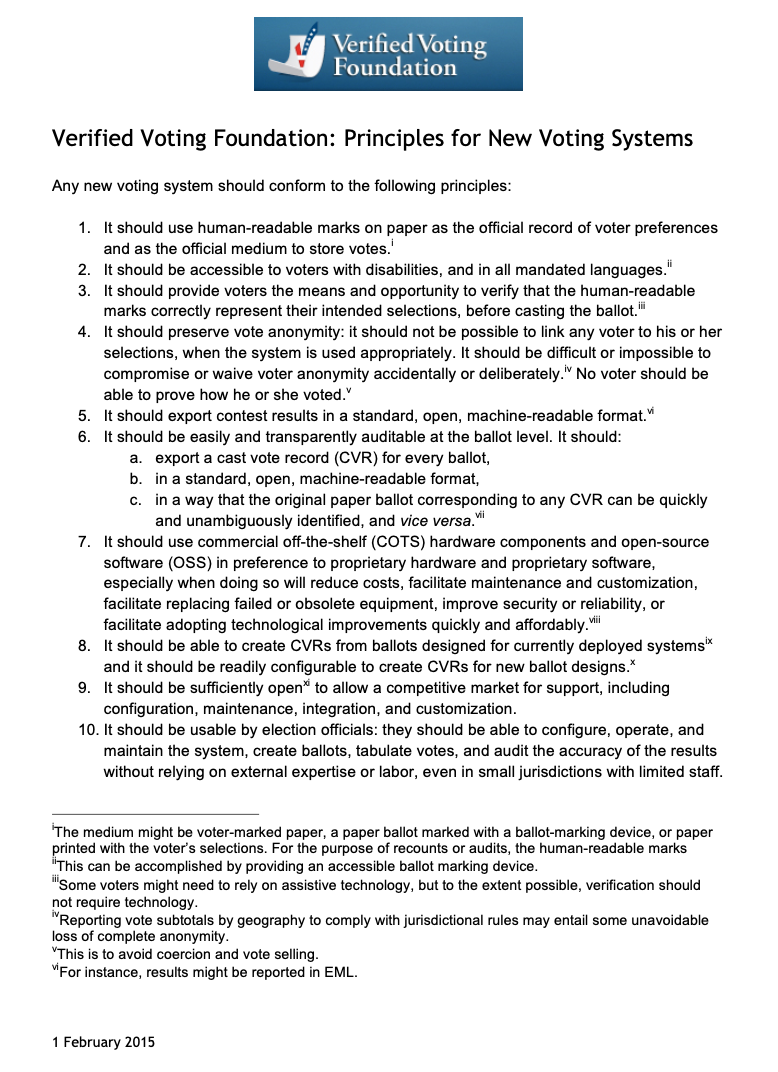
resource
Principles for New Voting Systems
Date: February 1, 2015
Author: Verified Voting
Issue: Voting Equipment, Paper Records
Publication Summary
Any new voting system should conform to the following principles.
- It should use human-readable marks on paper as the official record of voter preferences and as the official medium to store votes.
- It should be accessible to voters with disabilities, and in all mandated languages.
- It should provide voters the means and opportunity to verify that the human-readable marks correctly represent their intended selections, before casting the ballot.
- It should preserve vote anonymity: it should not be possible to link any voter to his or her selections, when the system is used appropriately. It should be difficult or impossible to compromise or waive voter anonymity accidentally or deliberately.iv No voter should be able to prove how he or she voted.
- It should export contest results in a standard, open, machine-readable format
- It should be easily and transparently auditable at the ballot level. It should: a. export a cast vote record (CVR) for every ballot, b. in a standard, open, machine-readable format, c. in a way that the original paper ballot corresponding to any CVR can be quickly and unambiguously identified, and vice versa.
- It should use commercial off-the-shelf (COTS) hardware components and open-source software (OSS) in preference to proprietary hardware and proprietary software, especially when doing so will reduce costs, facilitate maintenance and customization, facilitate replacing failed or obsolete equipment, improve security or reliability, or facilitate adopting technological improvements quickly and affordably
- It should be able to create CVRs from ballots designed for currently deployed systemsix and it should be readily configurable to create CVRs for new ballot designs.
- It should be sufficiently openxi to allow a competitive market for support, including configuration, maintenance, integration, and customization.
- It should be usable by election officials: they should be able to configure, operate, and maintain the system, create ballots, tabulate votes, and audit the accuracy of the results without relying on external expertise or labor, even in small jurisdictions with limited staff.